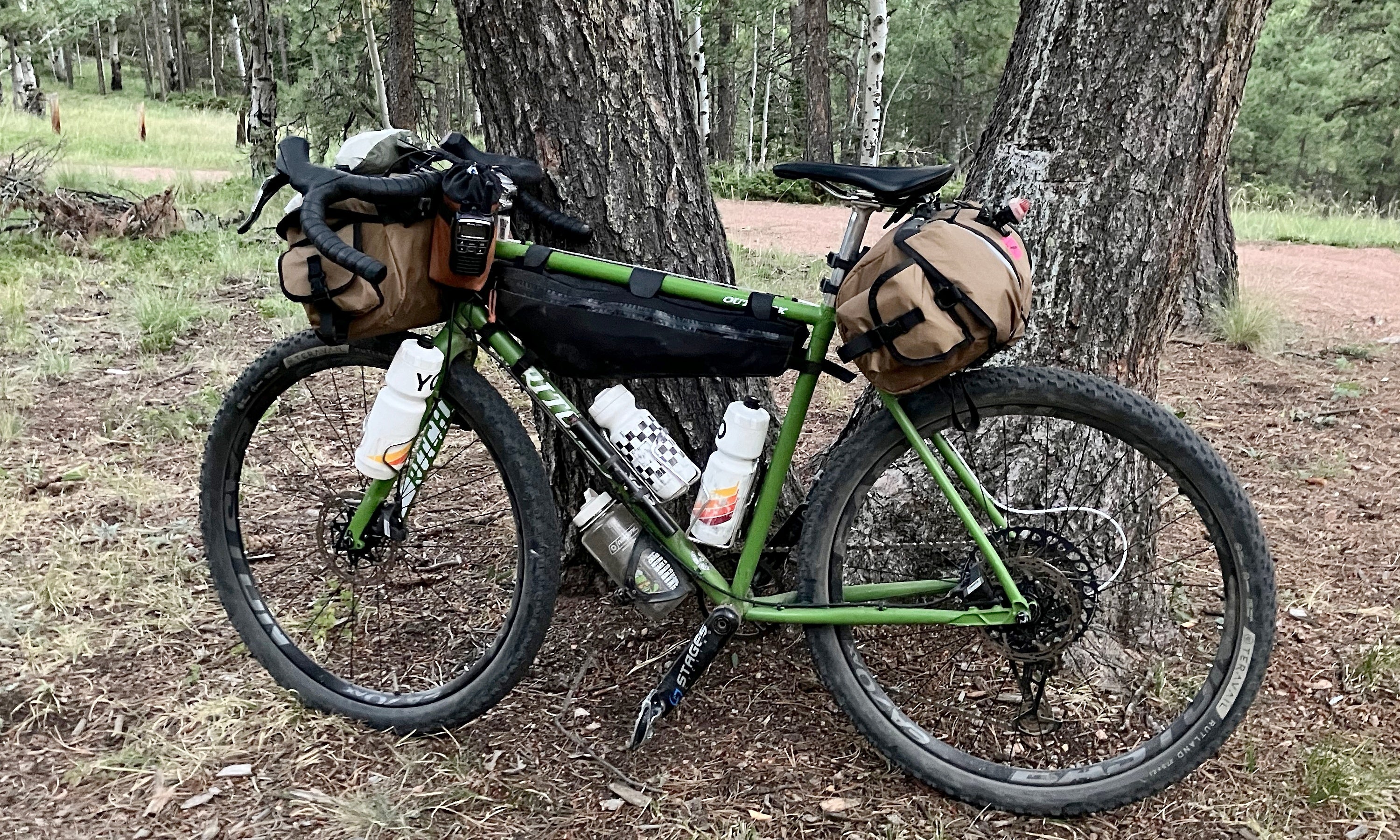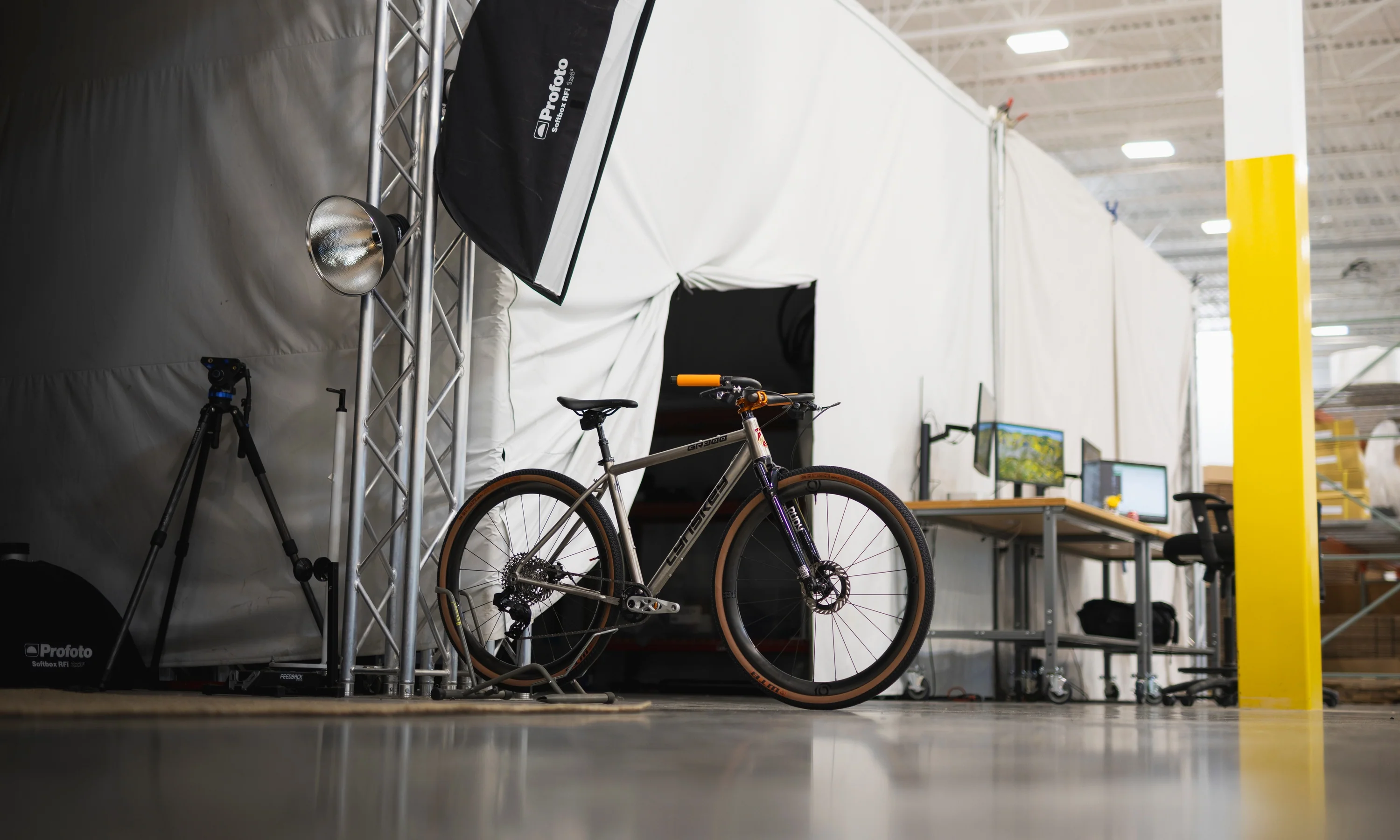If you’ve ever heard the hiss of a puncture, felt the weird splashing sensation on the backs of your calves, and then a final short-lived hiss, you will know the ride-saving brilliance of a good tubeless tire sealant.
Sealant is sometimes given the least attention in a tubeless system but it is really the most important part in ensuring your tires hold air. Nearly every rider I asked used the phrase “I just use” before naming a sealant company, suggesting that not much thought goes into this choice.
Well, it’s time to take a deep-dive on this magic goo that keeps air in our tires. Here’s a complete guide to tubeless tire sealant for mountain bikes, gravel bikes, and even road bikes.
[button]SHOP TIRES[/button] | [button]SHOP TIRE SEALANT[/button]
What is tubeless tire sealant and how it works
In search of someone who does think about sealant, I spoke to Oliver Kiesel of Specialized about his brand’s Rapid Air sealant. Kiesel explained to me that a sealant consists of three elements:
1. A natural or synthetic liquid rubber (a suspension of long chain polymers in liquid)
2. Some kind of anti-freeze
3. In most — not all — cases, a filament.
When a tire is punctured, pressure drops, and there is a rush of air out of the tire through the hole. This causes the liquid part of the liquid rubber (normally water or ammonia) to evaporate and leaves behind a rubber bung. The filament (particles suspended in the sealant) provides a surface around which the polymers can coagulate in between the two sides of the cut in the tire making for a faster and better seal. The anti-freeze element, if you were wondering, lets you ride in the cold without your sealant freezing.

The filaments in Silca's Ultimate Tubeless Sealant are easy to spot.
[product-block handle="silca-ultimate-tubeless-sealant"/]
Road vs. MTB tubeless tire sealant
Riders who run a tubeless system on drop bar bikes with pressures much above 40psi might want to look at a special sealant designed for that application. In high-pressure road tires, Kiesel says, “We have so little air volume that, if the hole is open for too long, the tire is flat and you can’t keep riding.” Road bike tires are high-pressure, low volume, and they can lose pressure very fast and become unrideable, this means a hole has to be sealed much more quickly than in a high-volume low-pressure mountain bike system.
So what do you do for high-pressure drop-bar tires? A lot of a sealant’s capacity to … uh … seal comes down to the type of filament in the liquid. According to Kiesel, a sealant can be optimized for road use. A road specific sealant, like Specialized’s Rapid Air sealant, should have “more variable and sharper-edged filament particles, as opposed to the same shape and size filaments in mountain bike and gravel sealants. Road tires need a plug that is stronger and more solid and can’t pass through the hole in the tire.”
Perhaps this is why mountain bikers have been adding glitter to their sealant for years, or perhaps they just want to look and feel fabulous even when they flat.
[newsletter]
Specialized is not the only company offering a sealant with additional filaments of various shapes, Squirt SEAL uses BeadBlock granules and it even sells BeadBlock itself separately as an additive. Finish Line also makes a sealant with Kevlar fibers, which I have found to plug holes very quickly and durably. Stan’s makes a race day sealant, which uses more filament, which does plug holes a little faster but also makes adding sealant through the valve next to impossible. Silca relies on carbon fiber particles for its Ultimate Tire Sealant, which is a favorite among TPC’s riders.
[product-block handle="stans-notubes-race-tubeless-tire-sealant-32oz-1"/]
For pressures much below 40psi, these considerations are less important. Mountain bikers have been running tubeless systems for a lot longer than the skinny tire crowd and most of the big name sealants work pretty well at these low pressures. In many cases, you might not even notice them working as they fight the never-ending battle against goat head thorns on your behalf.

How to choose your sealant
Although there is no disadvantage to running a road sealant in a low-pressure tire, it will cost you a lot more. Rapid Air sealant is fantastic, but it isn’t cheap. At 10 bucks for 2 oz it is nearly twice as expensive as Finish Line’s sealant, which is my daily choice. Finish Line seals tires fast and the plugs it makes seem to last at least as long as the rubber. If I were racing and wanted to have the lightest bike and the least chance of a race ruining puncture, I’d spring for the Rapid Air even if I was racing off-road.
With a more traditional sealant like Orange Seal’s Original formula, I found my tire went from 80 to 40psi before it sealed on the road bike. It wasn’t flat, but unless I could see the finish line in a race, I’d still stop to add air. By comparison, the Specialized and Finish Line sealants resulted in a drop of less than 10psi and I was able to keep riding without any issues other than a slightly sticky seat tube.
[product-block handle="orange-seal-tubeless-tire-sealant-with-twist-lock-applicator-8oz"/]
For mountain biking, I use Finish Line if I have some around. If I am traveling, or dropping my bike off at the shop to save my thumbs the “pleasure” of mounting another tire, I tend to use Stan’s or Orange Seal, and in both cases I opt for their “race day” or “endurance” formulas if I can. These formulas contain more filament, and plug holes a little faster. However if you already have a big jug of something else, I would keep using it. If you want to try adding some glitter, just sprinkle it in your tire before you mount the second half of the bead.
While most sealants these days will be ammonia-free, it is worth checking before investing in a huge jug, as the ammonia can cause corrosion in wheels and wheel components. Sealant is cheap to replace and wheels are not.

Let's all do our part to make flat tires a thing of the past. Photo: Josh Weinberg | The Radavist
Can you mix different brands of tubeless tire sealant?
Mixing two brands is generally a bad idea. Two different solvents, when combined, can result in all your sealant coagulating in your rim and create a so-called “Stanimal” or “Stan’s Monster.” This is a piece of solid rubber inside your tire. So don’t waste your new sealant or your time — clean out your old sealant first if you’re changing brands.
On the topic of solidified sealant, be sure to check yours every month or two to make sure it hasn’t dried out. If you rim wobbles and rattles, it’s time for you to recharge the sealant as it has gone solid inside. With that said I have often had sealant last longer than tires. If you have Squirt’s BeadBlock, maybe add some more for safe measure or even dump some glitter in there.
[button]SHOP TIRES[/button] | [button]SHOP TIRE SEALANT[/button]
Tubeless bike tire installation tips
Once you have selected your sealant, you’ll need to install it. My preferred Finish Line and Specialized sealants are as easy as any other to install, although I do find adding a couple of steps to my protocol across drop-bar and flat-bar setups ensures that I get the best performance.
1. Make sure to wash tires out with soap before mounting them, as some mold-release agents used in manufacturing can inhibit the coagulation of sealants. It’s also important to dry them completely. I have found that some sealants separate if the tire is at all wet or soapy.
2. Install the tire, making sure both beads are in the central trough of the rim, which makes installation considerably easier.
3. Remove the valve core and seat the tire with a compressor or floor pump. Allow the tire to deflate. All we want to do is get the beads seated on the rim to make it easy to pour in sealant via the valve stem.
4. Add sealant through the valve stem with a Stan’s syringe (don’t bother with cheap Amazon versions, they plug up easily), a tube, or a skinny-tip sealant bottle. I stick to the amount suggested by the sealant manufacturer for off-road uses, and I generally add a little more sealant in my road bike as you can lose a lot sealing a puncture at high pressure.
5. Install the valve core, pump up the tire, and set off on your adventures.
Some sealants like Stan's Race and Silca Ultimate are so sticky that they'll plug up valves so they have to be added to the tire before seating it. Specialized also suggest that you add the Rapid Air sealant before you seat the tire, but I have had good luck adding it through the Stan’s Syringe.
[product-block handle="stans-notubes-tire-sealant-injector-syringe-presta-schrader-1"/]
Cleaning off tubeless bike tire sealant
One thing to bear in mind with sealant is that it can really make a mess of your bike. If you aren’t careful, a puncture that takes 30 seconds to seal might forever encrust your seat tube, calves, saddlebag and riding partners with white, sticky goop. I have found that a credit card, or better yet a dough scraper is much more effective at removing the coagulated goop than any form of degreaser or a pressure washer.
[button]SHOP TIRES[/button] | [button]SHOP TIRE SEALANT[/button]
What if the tubeless tire sealant doesn’t fix a flat?
No technology is perfect. In a lot of cases, you can pop in a tube and ride home. If you live somewhere that’s very thorny (like I do in Southern California), it might be a bad idea to put a tube into a tire that is riddled with thorns. I always carry a small bottle of sealant with me when I ride. Sometimes I even patch tires mid-ride. However, this extreme scenario might be the right time for some tire plugs. But that’s a whole different how-to article. Fortunately, we have a helpful guide to this too.

























